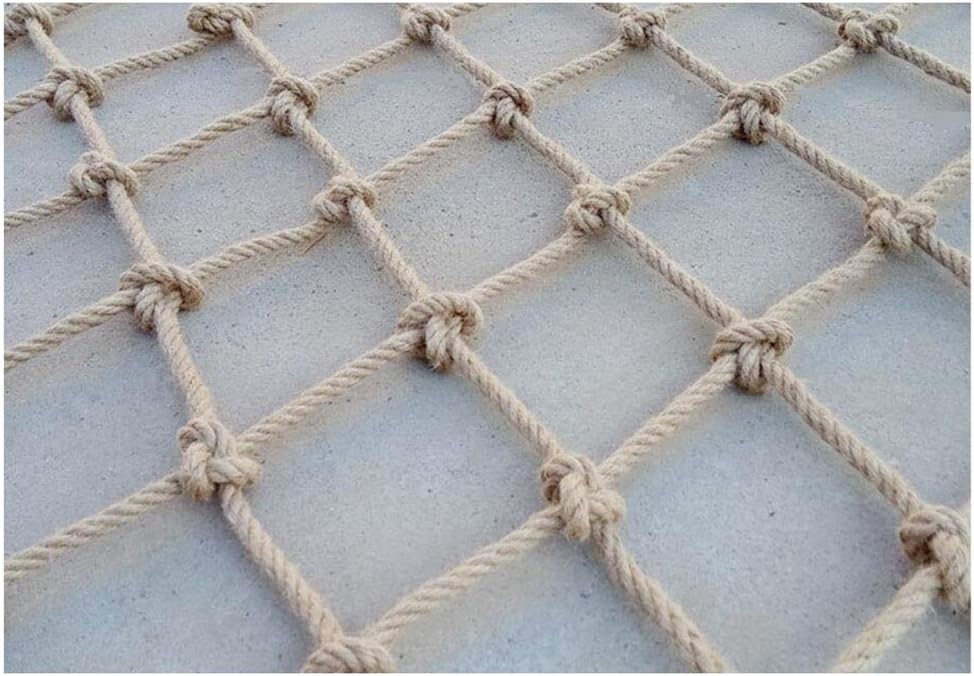Introduction
In a world where eco-conscious choices are becoming increasingly important, sustainable materials like jute are in high demand. One versatile product that embodies both eco-friendliness and functionality is jute rope netting. Known for its natural appeal and strength, jute rope netting is a favorite among DIY enthusiasts, landscapers, and decorators alike. Whether you’re looking to enhance your garden, add rustic charm to your interiors, or create a safe play area, jute rope netting offers an affordable, environmentally friendly option that combines durability with visual appeal.

What is Jute Rope Netting?
Jute rope netting is a type of netting made from the fibers of the jute plant, a fast-growing, renewable crop primarily cultivated in India and Bangladesh. Jute, often called the “golden fiber” for its luster, produces a strong, biodegradable fiber that is ideal for rope-making. When crafted into netting, jute provides a sturdy material that can support weight, resist outdoor elements, and decompose naturally without polluting the environment. This makes it an excellent choice for eco-conscious individuals who want a reliable material with a minimal carbon footprint.
Advantages of Using Jute Rope Netting
- Eco-Friendly Benefits
Jute rope netting stands out for its environmental benefits. As a biodegradable material, jute decomposes naturally, which reduces waste and pollution. Additionally, jute plants absorb significant amounts of carbon dioxide, helping offset greenhouse gas emissions. - Strength and Durability
Despite its natural composition, jute rope netting is remarkably strong and durable. It can withstand outdoor conditions, making it suitable for various applications, from garden structures to playground safety netting. - Aesthetic Appeal
With its natural, rustic look, jute rope netting adds a touch of earthy elegance to any setting. It’s popular in both modern and traditional décor, where it brings warmth and texture to spaces. This aesthetic appeal makes it a top choice for interior designers and DIY decorators. - Versatile Applications
Jute rope netting is versatile enough for use in both indoor and outdoor projects, ranging from erosion control to crafting and interior design.
Top Uses of Jute Rope Netting
- Gardening and Landscaping
Jute rope netting is a valuable tool for gardeners and landscapers. It provides erosion control by stabilizing soil on slopes and hillsides, and it’s commonly used as a trellis to support climbing plants. Gardeners also use it to create natural barriers or visually appealing plant displays. - Home Décor
Indoors, jute rope netting is popular for creating wall hangings, partition screens, and unique shelving supports. It brings a coastal or rustic feel to spaces, making it ideal for boho or farmhouse-style homes. It’s also commonly used to craft DIY art installations or as a base for hanging small potted plants. - Children’s Play Areas
In play areas, jute rope netting is used to create safe climbing structures and boundaries. Its sturdy construction supports the weight and movement of children, making it a secure option for playground installations. - Commercial and Event Uses
Jute rope netting’s versatility extends to retail and event décor. Many retail stores use it to enhance displays or create sustainable packaging. At events, it adds a rustic or natural touch to decorations, complementing outdoor or eco-friendly themed events beautifully.
How to Choose the Right Jute Rope Netting for Your Project
When selecting jute rope netting, consider factors like thickness, weave type, and strength based on your project’s needs. For outdoor projects or high-traffic areas, choose a thicker, tightly woven netting that can withstand weight and weather. For decorative indoor uses, lighter, loosely woven netting will likely suffice. Additionally, some jute nettings come treated for UV resistance or moisture resistance—features that can extend its lifespan in exposed environments.
Installation Tips for Jute Rope Netting
Installing jute rope netting is straightforward, but a few tips can ensure it remains secure and effective:
- Anchor Points: Secure your netting at multiple points to distribute weight evenly. This is especially important for load-bearing uses, like plant support or play structures.
- Proper Tension: Ensure the netting is tight enough to avoid sagging but not overstretched, which could reduce its longevity.
- Weather Protection: For outdoor installations, consider applying a natural sealant or treatment to protect it from moisture and sunlight. Although jute is durable, additional protection can prevent early wear.
Maintenance and Care Tips
Taking care of jute rope netting is simple:
- Cleaning: Regular dusting or gentle washing can help keep it clean. Avoid soaking it in water, as excessive moisture can cause rotting over time.
- Storage: If you need to store your netting, ensure it’s completely dry and keep it in a well-ventilated area to prevent mold growth.
- Handling: Handle jute with care, as rough handling can cause fibers to fray. If fraying does occur, trimming the edges or applying a small amount of adhesive can help maintain its appearance.
Conclusion
Jute rope netting is a sustainable, versatile, and visually appealing material suitable for a variety of projects. From gardening to home décor, it offers an eco-friendly alternative to synthetic netting without sacrificing strength or durability. Whether you’re an eco-conscious gardener, a DIY decorator, or someone looking to create a safe play area, jute rope netting can elevate your project while supporting environmental sustainability. Consider making this green choice for your next project and discover the benefits of a natural, renewable material that’s as practical as it is beautiful.












